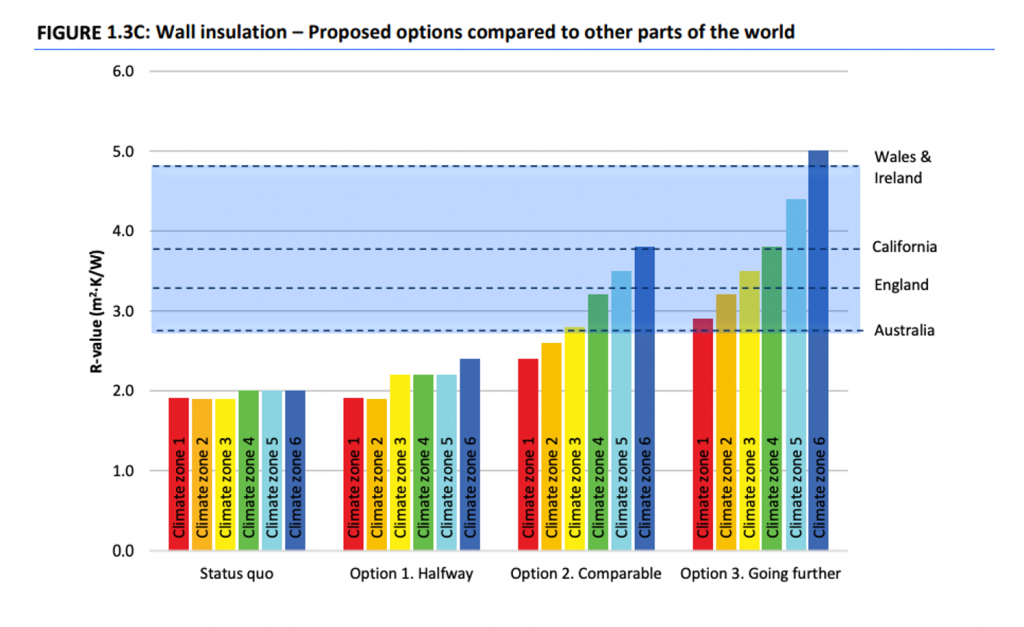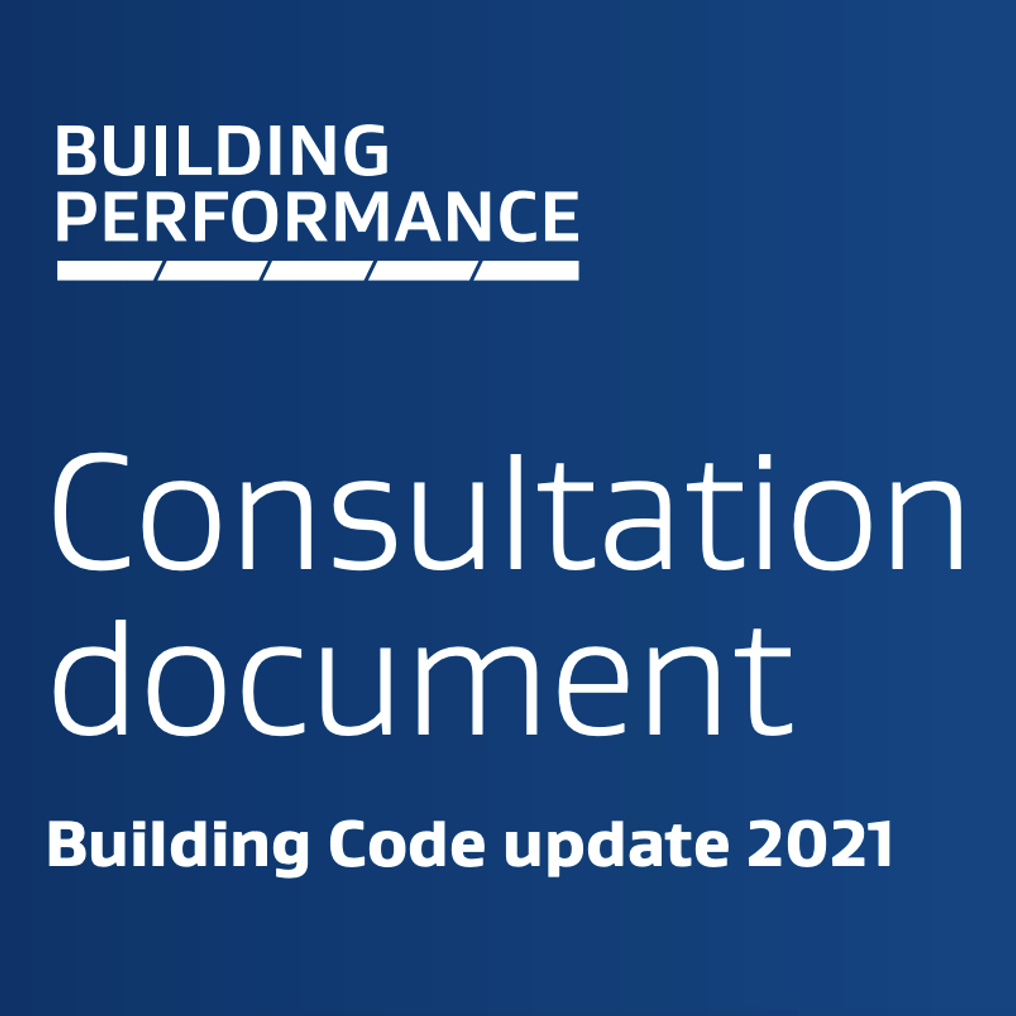Podcast: Play in new window | Download | Embed
Update: See draft consultation submission here. Please feel free to comment, copy or share. The more people that make a submission, the better!
The Ministry of Innovation Building and Employment (MBIE) has released its consultation document for the 2021 proposed changes to the New Zealand Building Code. This represents a great opportunity to positively impact the future of building standards. But does it go far enough?
The consultation is asking for feedback on 7 main proposals with detailed changes suggested to various clauses. I’m mostly interested in proposal 1 – energy efficiency for housing and small buildings.
It’s been pointed out that the proposals are not actually recommending any changes to the New Zealand Building Code. They are in fact just suggesting tweaks to the Acceptable Solutions and Verification Methods of a select few of the clauses of the Code. These changes could however be significant.
In theory, the New Zealand Building Code is a ‘performance-based code’. This means that it should be the outcomes that matter, not the individually specified parts of the building. In the reality, most designers and builders take their cues from well-established ‘Acceptable Solutions’. Acceptable Solutions are the paths of least resistance to getting a building consent.
A truly performance-based code would require buildings to be modelled and physically tested to check that they achieve a level of health, comfort and durability while not consuming too much energy. This is exactly what happens when a Certified Passive House Designer or Consultant uses PHPP to design to the Passive House standard.
Most New Zealand homes however are not modelled. The meager energy efficiency requirements of our Code as outlined in Clause H1 can be met in most cases simply by specifying minimum levels of insulation. There are some fundamental problems with this.
- What gets specified is not always (hardly ever) what gets installed. Places get missed, more timber gets added, insulation gets removed for plumbing, cables, ducts, etc.
- If someone does do a very simplified calculation using the Verification Method instead of the very basic Schedule Method, then a lack of insulation in one part can be compensated for with extra insulation added in another part. Unfortunately, this isn’t how physics works. If your bucket has holes on the side or the bottom, it’s still going to leak regardless of how many lids you put on the bucket. The same is true for heat flowing out of a building.
- This leads to one of our biggest deficiencies, we don’t address air permeability.
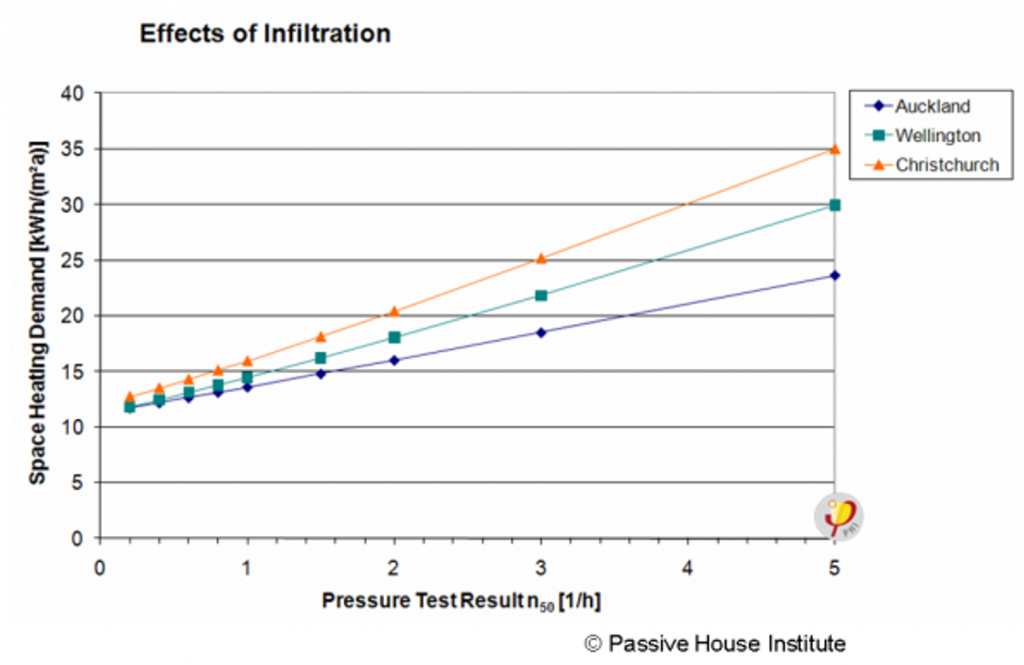
It’s well known that air infiltration dramatically decreases the effectiveness of insulation. Yet New Zealand remains one of the few developed countries that has no requirement for air permeability testing of our buildings. Thanks to the work of Sean Maxwell and ATTMA, we have the capacity, the systems, and the standards to implement Blower Door testing for all new builds in New Zealand, starting today. Air permeability testing must be added as a requirement for new buildings.
Let’s Step it Up
The consultation document compares some New Zealand cities with other cities that share a similar climate. This recognition that our climate is not completely unique, is a big step forward in my opinion. For too long, we’ve hidden behind a false narrative that New Zealand’s climate is so special that we have to reinvent the laws of physics.
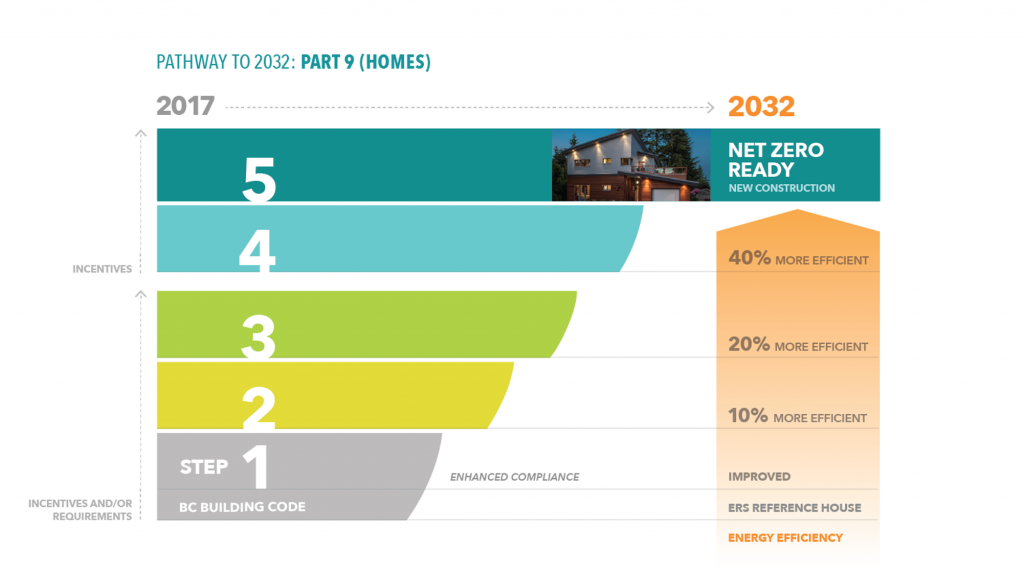
I encourage MBIE to go further with this approach of international research and adopt our version of British Columbia’s Energy Step Code. Fortunately for MBIE the great team at Oculus has already translated this logical approach to the New Zealand context.
There’s so much benefit to a building code roadmap. The Step Code establishes a bold yet completely achievable goal for all new buildings built in the year 2032. For the intervening years, a set of ‘steps’ are laid out. The result is that everyone knows where we’re heading, and when we’re going to get there. I strongly recommend that New Zealand adopts this approach.
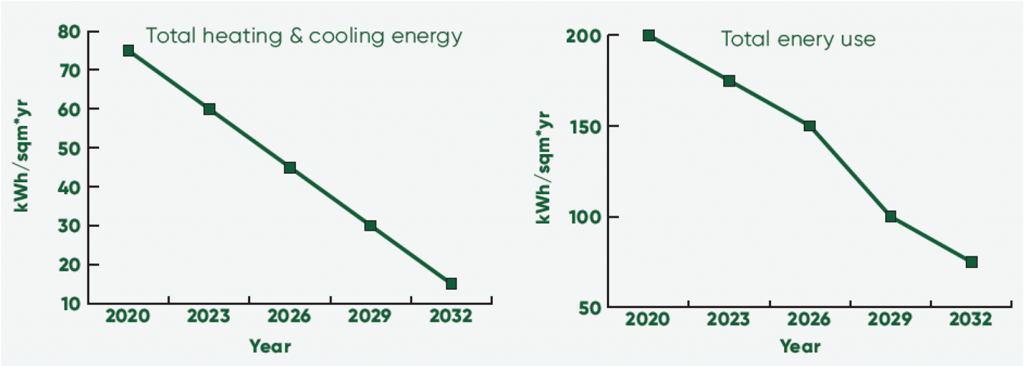
The current proposals are really just tweaks to Acceptable Solutions, but they are a step in the right direction. Let’s not entertain options 1 and 2 (‘halfway’ and ‘comparable’). Option 3 is the only viable first step. But this should only be the first step.
I’m keen to get others’ thoughts and input on this consultation. How can we work together to present a united front and give MBIE the confidence to be bold? If you’re keen to help out, please get in touch.
